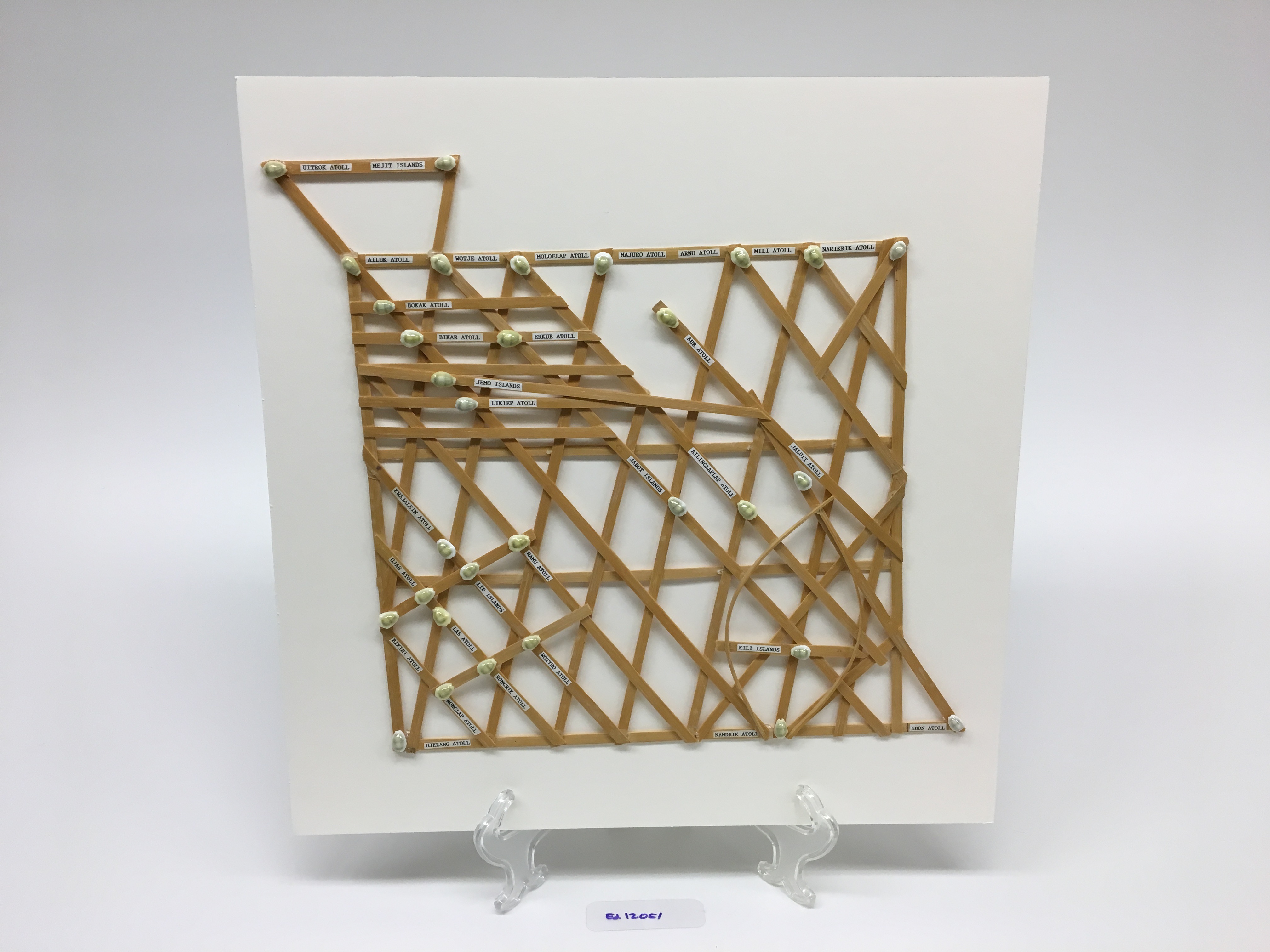
Rebbelib (stick chart)
liok / mālwe (aerial pandanus root (or coconut frond midrib)
libbukwe / likajjid (cowrie shells)
kokwal̗ (coconut sennit (rope))
ED# 12051
Accessioned December 2001.
Rebbelib in ejja bar juon iaan meto ko kōjerbali n̄an katakin meto. Nan̄in āinl̗o̗k wōt meto eo, rebbelib in kar ejaake n̄an kaalikkari ae ko im n̗o ko ikōtaan im rej jepool̗i aelōn̄ ko ilo Rālik im Ratak jim̗or – unin an lōn̄ l̗o̗k liok/mālwe im epoub l̗o̗k kab ekilep l̗o̗k. Ej kōm̗m̗an jān liok ak mālwe ekoba libbukwe. Libbukwe kein ie rōkāāl im rej kōkōn in raan kein jān ippān ri-amim̗ōn̗o ro. Aolep men kein rej āji ippān doon kōn kokwal̗ eo (to eo). Rebbelib in rej kōjerbale wōt ioon āne kōnke aolepān jel̗ā eo epād ioon wa eo ilo̗jet.
The rebbelib is another type of navigational teaching device. Like the meto, the rebbelib was created to precisely represent the currents and swells in between and around the islands in both Rālik (sunset) and Ratak (sunrise) Chains, which is why there are more sticks and it is busier and larger. It is made from the aerial roots of the pandanus or from the coconut frond midrib plus cowrie shells. The cowrie shells are a contemporary addition by the craftsmen. All these are assembled together with a coconut rope (twine). This is used only on land because the practical knowledge is attained on the canoe in the water.

Add a Comment